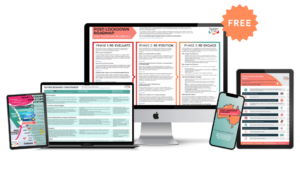Running a small business can be an extremely rewarding enterprise but it does come with some significant challenges. Bearing responsibility for the success of your business is certainly stressful, add to that the task of managing other people and your responsibilities become quite complex. Every boss wants to create a safe and happy working environment for their employees, and there are a lot of practical ways to create a mentally healthy workplace.
What are the benefits of creating a mentally healthy workplace?
Below are some of the reasons why it’s important to create and maintain a mentally healthy workplace:
- Improvement in job satisfaction
- Improvement in productivity
- Retain more staff for longer
- Ensure that your ethical and legal obligations are met
- Become an employer of choice for job-seekers
- Retain more skills and experience in your team
- Staff take fewer sick days
Maintaining a workplace that is supportive of everyone’s mental health and wellbeing is beneficial to everyone, owners, managers, employees… even customers have something to gain! When your team is happy and eager to work, their quality of work will be better and your customers will receive a higher quality product and service.
So, can you achieve this? The best way is to start at the start of your team members’ employment journey with you.
Plan for onboarding to give staff a positive start
Providing new team members with a proper induction to your business with adequate training, structure and support is key to making sure they feel welcome and supported in their new role.
As the employer, it is important that you plan the onboarding process for new team members ahead of their arrival. Ensure all their software logins are set up, uniforms available, and any documentation they might need is ready to go from day one. Prepare an adequate training plan based on feedback from other team members and provide plenty of opportunities for them to ask questions. Even new team members with previous experience in a similar role should be provided with a thorough introduction to your business and processes.
Make sure staff know where to go for support
Unlike most larger organisations, small businesses rarely have a Human Resources department or manager. You as the business owner/manager are responsible for looking after your employees’ wellbeing, ensuring that you are available to help resolve any issues they may have while working for you.
To prevent staff from feeling disconnected from their work and unheard in their role, it’s a good idea to schedule regular one-on-one check-ins with your team. These private, organised meetings are an opportunity for you to find out how they are handling their workload, discuss any challenges they are experiencing that may be impacting their performance, celebrate wins, provide constructive feedback and set goals together.
Identify common stressors and encourage open communication
There are many work-related stressors that may affect your staff’s mental health. Some more common ones include:
- Feeling overworked
- Lack of acknowledgement/appreciation
- Bullying or harassment (from other team members or customers)
- Clash in personal/work priorities
- Unsafe or unpleasant working environment
- Poor communication
- Lack of certainty
- Unrealistic deadlines
The above list is a great starting point for business owners to review their processes to find any areas that they could improve to make their business a better place to work. However, the best way to identify problems like those listed above it to speak to your team. You may choose to hold a team meeting and encourage an open discussion, alternatively, it may be beneficial to ask for anonymous feedback from your staff using an online tool like the Free Suggestion Box.
It’s important for those in leadership roles to normalise talking about mental health openly. A social stigma around mental ill-health remains and may prevent your team members from acknowledging that they are struggling. Check out the resources below for more on how to discuss mental health with your staff sensitively and productively.
Resources for business owners
There are lots of resources are available for small business owners to help manage their personal mental health and create a workplace that is supportive of their employees as well.
If you’re not sure where to start, check out these resources:
- Check out the articles and free training resources on Ahead, a digital hub funded by The Australian Treasury that supports mentally healthy businesses.
- Download the Blueprint for Mentally Healthy Workplaces created by the Mental Health Commission
- Check out the articles and resources created by Heads Up, an initiative developed by Beyond Blue and supported by the Mentally Healthy Workplace Alliance.
- Watch the free online seminars by the Mentally Healthy Workplace Alliance.
- Apply for the NewAccess for Small Business Owners where business owners can access 6 free and confidential mental health coaching sessions, developed by Beyond Blue.
Most states and territories have programs and other free resources available locally. Just search for “[Your state/territory] business mental health”.
Take Action
Create an action plan for your business using the Heads Up action plan tool and put processes in place to address the actions mentioned in the outcome of the plan.




